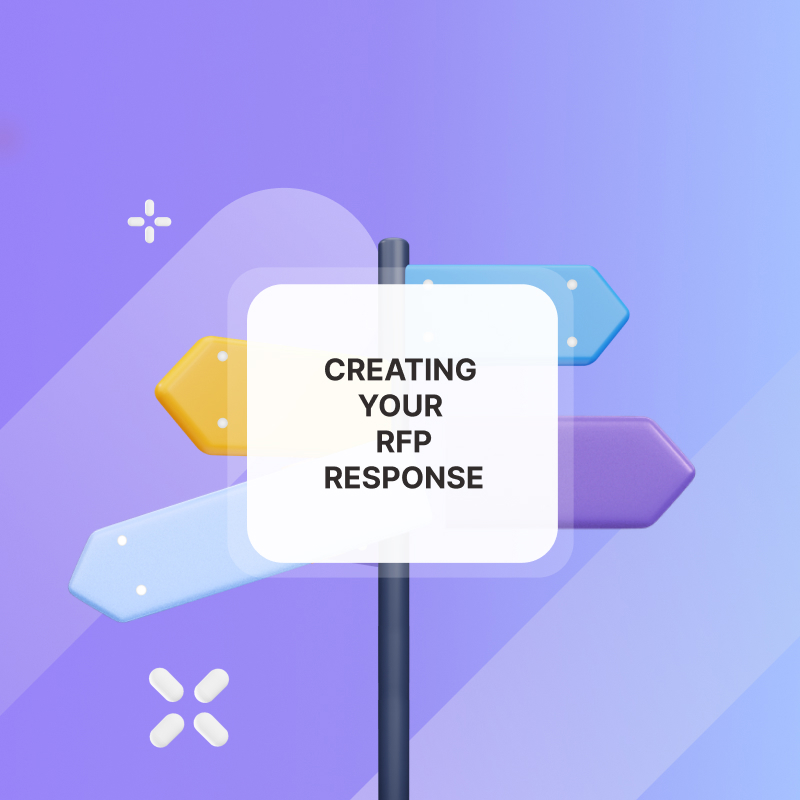
Technical buyers invest great effort into building their company’s current system. Therefore, they are highly protective of what they have built and typically approach new products with scepticism.
Their primary concerns revolve around the specifications, implementation details, and how seamlessly it integrates with their existing technology stack.
By the end of the post, you will understand the technical buyer’s priority and how to sell to them effectively.
Who is a Technical Buyer?
The technical buyer is a key decision-maker who focuses on the technical aspects of your product or service.
They are concerned about how your solution can integrate with their current systems, comply with their security requirements and deliver the performance they expect. They also want to know if your solution is something they can build by themselves or if there are better options.
The technical buyer needs more than simply framing your features into benefits. You have to be knowledgeable about the specific problem your product is solving. You also have to learn a bit about the technology and the basic logic behind the performance of your product. They want to know the “how” behind your value proposition.
They are usually the Head of IT, CTO, CSO or IT manager. However, they are not limited to these titles. The technical buyer can also be a technically knowledgeable end-user.
What You Should Know About Technical Buyers
- No Big Claims:
Learn about your product functionality and explain the problem you solve in simple and clear terms. Big claims and technical jargon could put you in a trap.
They might begin to dive deeper technically and ask questions you can’t answer. This creates a bad impression potentially destroying the deal.
While the technical buyer may not have the total power to say yes, they can say no- and it will affect the deal.
Use case studies, relatable examples or analogies if needed.
- Keep It Brief:
Technical buyers usually have a lot to do at their jobs and they have spent years optimising their time for productivity. Ensure that your value proposition does not take forever to understand. This also demonstrates that you respect their time.
- They Won’t Have Time for Numerous Meetings:
For example, developers will not spend productive time meeting with you every time. You should find an effective and asynchronous way of communicating. You can use digital sales rooms to achieve this. This also helps if you are selling to a technical team in different time zones
Strategies for Selling to Technical Buyers
1. Allow Sales Teams To Immerse Themselves In Your Product:
Your sales team need more time to explore your product. By immersing themselves, and learning more about certain features, they can discover selling points that could be a game changer in the sales process.
Ensure that they make time to watch video recordings of calls with prospects to learn more from seasoned sales colleagues and sales engineers.
Structure these videos in a centralised and collaborative sales environment like Hubforce. It enables you to track their engagement with the videos, and see which sales reps are actively updating themselves and which ones are lagging behind.
2. Proactively Address Technical Issues:
Most technical buyers will not engage in numerous meetings, therefore it is important to share relevant information with them in a centralised environment. Structure content like security certificates and technology documentation in a user-friendly way. Then track their engagement and proactively follow up.
Hubforce provides a secure digital sales room where you can segment your sales materials according to different decision-makers. For example, you can share security documentation, frequently asked questions, case studies, interactive videos or even security certifications on a separate page for only the technical buyer to access.
You can also track how much time they spend on each content. Based on their engagement, Hubforce AI will recommend follow-up actions, enabling you to proactively address technical issues.
Sales teams should also partner with product and marketing teams to create buyer enablement contents that resonate with technical buyers.
3. Design an Effective Proof of Concept (POC)
A proof of concept (POC) allows technical buyers to experiment with your product or service and see how it can address specific technical challenges within their own environment.
Here's how to design an effective POC for technical buyers:
- Ensure it tackles their most pressing technical pain points. Don’t get lost in showcasing cool features
- The POC should showcase core functionalities.
- Use the most stable version of your product and set up the POC in a test environment to minimise any disruption to their existing systems.
- Provide comprehensive documentation and training materials for the technical team using the POC.
- Involve the sales engineer to guide the POC process. They would answer technical questions and troubleshoot any issues.
- Gather data throughout the POC to demonstrate the product's impact on their technical metrics (e.g., performance improvement, error reduction).
- Present a clear and concise report after the POC, highlighting results and how they align with the pre-defined goals.
- Openly discuss any challenges encountered during the POC and propose solutions.
- Outline a clear path forward for full implementation, considering their feedback and addressing any lingering concerns.
- Stay connected with the technical buyer after the POC. Answer questions, provide ongoing support, and showcase your commitment to their success. Your digital sales room is a great medium to stay connected and continue providing value without the need for meetings.
- Ensure the POC adheres to their security protocols and data privacy regulations.
- Avoid over-promising.
- Use valuable feedback from the technical team to improve your product and future POCs.
If you win over the technical buyer, they can become advocates for you, especially for the economic buyer. This is because companies prioritise investing in their technical teams.
4. Establish a Clear Roadmap for Implementation
Clear means of communication help to maintain deal momentum.
Technical buyers possess an in-depth knowledge of their organisation's technical landscape, enabling them to identify potential pitfalls or compatibility issues that might arise from adopting a new solution. Therefore, they require thorough documentation, detailed explanations, and a clear roadmap for implementation.
Hubforce provides a collaborative workspace for your sales team to structure relevant materials in a smooth flow.
5. Align the Sales Engineering and Product Teams
Sales engineers and product teams should be actively part of the sales process. The sales engineering team explains the technology architecture to the technical buyer. The product team helps sales reps to understand the capabilities of your product in detail, so that they won’t omit important points during the sales process or overpromise, risking the reputation of your business.
6. Be transparent
Technical buyers are careful of solutions that could potentially disrupt their systems or operations. Highlight the reliability and security features of your product. Be transparent about any potential integration challenges and offer clear solutions.
Using Hubforce to Sell to the Technical Buyer
It is important to design a buyer journey that demonstrates that you value the technical buyer’s time and understand their pain points. This also saves time for your sales team, enabling them to easily focus on other important sales activities.
Hubforce enables you to create personalised digital sales rooms to provide a buying journey that aligns with the goals of the technical buyer.
- You can centralise and structure all sales materials according to how they align with your technical buyer’s priorities at each stage of the buying process
- Create collaborative mutual action plans and align them with the technical buyer’s goals
- See if they have read relevant content
- See how long they are spending on each piece of content
- See if they are sharing it and who they are sharing it with.
Hubforce AI gathers this data and recommends follow-up actions for you.
This means that you can monitor the technical buyers and how they progress through the deal without incessant meetings.
Create your first 5 hubs for free.
















